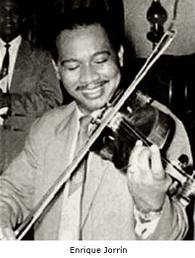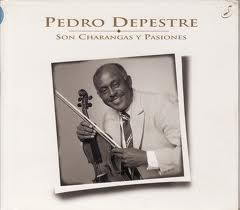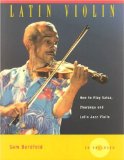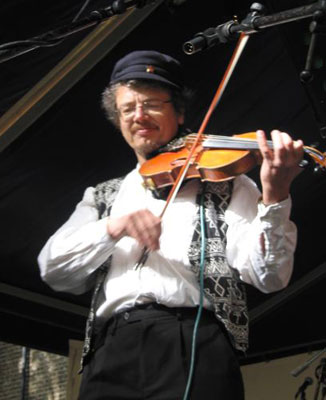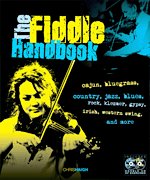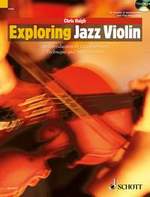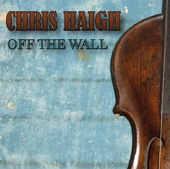
MENU TO FIDDLE STYLES:
Cuban Fiddle
The Island of Cuba has one of the richest, yet internationally least well known of fiddle styles. Whether in the hands of bandleaders, soloists or sidemen, the violin has been a key element of Cuban music for centuries, and the tradition remains vibrant to this day.
Cuba was colonised by the Spanish from 1511, and populated by slaves brought over from west Africa. African musical tradition which, unlike in the American colonies, was not actively discouraged, became an important part of Cuban music. It was the French, however, who were largely responsible for introducing the violin to Cuba. A revolt on Haiti in 1791- at that time the French colony of Saint Domingue- brought many French and Creole refugees fleeing to Cuba, where many of them settled in the Eastern part of the island, known as Oriente. Many of them brought their fiddles. The sale of Louisiana territory by Napoleon to the US in 1812 brought a further influx of fiddle-wielding French immigrants. They brought with them a type of 2/4 line dance known as the Contradanse, which was quickly adopted by the Cubans as the Contradanza. The group performing such a dance would be the “orquesta tipica”, consisting of two fiddles, two clarinets, a trombone, a trumpet and a serrated gourd- the guiro. The sound produced by these bands sounded was not unlike the proto jazz evolving in New Orleans; traditionalists hated it, and one newspaper condemned the contradanza as “an indecent invention brought to us by the French”.
The dance became a couple dance, the danza The musical form gradually became more complex, acquiring four different sections (played ABACAD), with an intro section recurring every time; different instruments would lead different sections. The final, D section was strongly syncopated section influenced by the Afro-Cuban rumba. By the 1850’s the dance had become known as the danzon, and was regarded as Cuba’s national dance, and by the time of national independence in 1898 it had become a symbol of national identity.
By the turn of the 20thC, the orquesta tipica was in decline, being replaced by the charanga Francesa. Fiddles remained central, with from 2 to 4 on the band, along with piano, contrabass, wooden flute, timbales and guiro.
Another tune type, the Son had been running in parallel with the danza/danzon. It had originated in rural eastern cube in the late 18thC. It was based in simple I/V or I/IV/V chords and had moderate tempo. It had lyrics of a topical and often political nature, with a chorus (coro) alternating with a vocal solo (sonero). The son developed a binary form; one part a structured, “closed” form, the other an open ended montuno section with call and response figures. By the 1920’s the son began to eclipse the danzon. The Son Conjunto became the standard lineup in the 1930’s, with piano, congas, trumpets, guitar,maracas, clave and tres (a guitar- like instrument with three pairs of strings). Jazz quickly came to influence Cuban music; the north American violinists Jimmy Holmes and Max Dolin were both heard in Havana in the 1920’s. The first Cuban jazz radio broadcast was led by the violinist Jose Antonio Curbelo.
An important development for the violin in Cuban music came with the formation of a new band in the 1940’s; the Orquesta Melodias del 40. This featured an outstanding violinist Miguel Barbon, also known as Brindis or El Nino Prodigo (the child prodigy). He was a virtuoso improvisor on the violin, and became the model for generations of Cuban fiddlers to follow. In later life he was a featured soloist with the Afro Cuban All Stars. He started out with a serious classical technique, which he was able to use to full effect in his soloing. His showed great variety and invention in his solos; lazy triplet crotchets are a common feature, as are chromatic passages and adventurous double stops. Very unlike the sinuous lines of someone like Grappelli, his phrases were always simple and neatly ordered, with short ideas repeated many times. A favourite, and much imitated motif is Barbon’s killer ending to a solo; a tremelando octave ascending phrase which builds tension and excitement to breaking point. Pity the soloist who had to follow him! You can hear it to full effect on what is often regarded as his finest solo, on Esta Melodia.
In 1949 another violinist, Enrique Jorrin of Orquesta America wrote a tune called La Enganadora- it was the first of a new genre of tune which was to become immensely popular- the cha cha cha. The name comes from the sound of the dancer’s foot scraping the floor on the “4 and 1” of the prevailing rhythm- 1,2,3,4and 1,2,3 etc. The cha cha cha became a hit among dance bands in the US- perhaps the start of the great export trade of Cuban music. Jorrin is credited with coming up with the idea of singing and playing fiddle simultaneously, a technique later adopted by Rafael Lay and Pinto Campa.
In the 1950’s and 60’s there were many established Charanga bands in New York. One of the best, led by Mongo Santamaria, featured two great violinists, Chombo Silva and Puppi Legaretta. These two were among the many musicians who fled Cuba following the revolution in 1959. Silva is notable in Cuban music for his extensive use of jazz in his playing; this comes from the fact that he is also a saxophonist, sometimes dubbed the “Latin Lester Young”. His jazz knowledge allows him to create harmonic substitution, with many altered notes; 6ths, 7ths, 9ths and flat 9ths. Frederico Britos, a violinist from Uraguay, brought a similar jazzy element to Cuba in the 1960’s with his bossa-inspired group Los Fredericos. Eddie Drennon was another famous violinist, very bluesy in style, who worked with Tipica Novel from the mid 60-s through to the 80’s. Perhaps the best known modern Cuban violinist is Alfredo de la Fe, working with Fajardo, Eddie Palmieri, Tito Puente and Tipica 1973. He has a modern, attacking style, and uses electric violin, often with effects such as wah wah or phaser. Back in Cuba, a band called Los Van Van, featuring two violins, has been dominant for 25 years, incorporating pop influences and championing a new style called the songo.
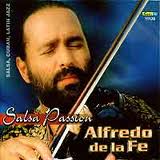
Undoubtedly the biggest event in 20thC Cuban music was the recording of the Buena Vista Social Club album, recorded in Havana in 1996 and released in 1997. The brainchild of Nick Gold of the British World Circuit record label, it brought together a large group of veteran Cuban musicians who, along with American guitarist Ry Cooder, sought to recreate the golden age of Cuban music from the 40’s and 50’s. The result was an unexpected and immense success, selling eventually 8 million copies, and hugely boosting the profile of Cuban music throughout the world. Although there was no violin on the original album, violinist Pedro Depestre joined the band shortly after it began international touring following the success of the album. His father had been violinist with the highly influential band Orquesta Aragon. Formed in 1939, Orq. Aragon became, in the 1950, the leading exponents of Cha Cha Cha. Pedro Depestre replaced his father in the group in 1959. He went on to lead his own group, the snappily titled Orquesta Tipica Juventud' de Santiago de Cuba, and to be a string arranger and music producer on Cuban radio and TV. He died in 2001, immediately after a gig with the Buena Vistas in Switzerland.
Cuban Violin Technique
In the world of fiddle playing, Cuban music is almost unique in the sense that for much of the time, the violin is a key part of the rhythm section. Along with piano, percussion and bass, the fiddle holds down the groove, playing almost endlessly repeated lines of 2 to 8 bars. To be able to do this successfully, and to get the fullest enjoyment from the music, it’s important to be fully aware of the complex web of rhythms being produced by all the different instruments of the charanga. The key to understanding this is the clave (prounounced clah-vay). It means, literally , the key. It is the pattern, usually two bars in length, around which all the rhythms are built. The two bars are different; there are five rhythmic strokes or hits; one bar has 3, the other 2, so the clave can either be 3-2, or 2-3.. The 2 side, made of crochets, sounds; rest 2,3,rest, whilst the 3 side, of quavers, sounds 1 rest rest 2 rest rest 3 rest. This rhythm then defines what every other instrument does. 2-bar Melodic patterns superimposed on the clave are called montunos; short but complex and syncopated, these are what the violin plays as part of the rhythm section. When playing in a charanga you will often be playing written parts, with the montunos already defined. If, on the other hand, you have to invent your own, you need to establish the chord sequence, determine which way the clave is going, and listen to the piano montuno, with which yours will have to work.
Bowing should be light and smooth, with mostly separate strokes, and pizzicato is often used, both during backing and soloing.. Violin solos in Cuban music are both very similar to, and very different from jazz solos. The similarity lies in the degree of freedom, and the virtuosity which is often expected. The chord sequences are relatively simple compared with jazz, but the main difference lies in the rhythmic complexity of the backing. With so much going on in the background, you can afford to take long pauses between phrases. You can also focus much more on rhythmic ideas yourself; think of the One Note Samba, where the melody of the A section is pared down to just two notes, but with a richly syncopated rhythm.
______________________________________________________________________________________
The chief source for this article was the book “Latin Violin: How to Play Salsa, Charanga and Latin Jazz Violin
” by Sam Bardfeld. (Gerard and Sarzin, 2001). As well as detailed and authoritative background and history, it also features a cd with original solos from many of the great players, along with transpositions and analysis.
______________________________________________________________________________________
Return to fiddlingaround.co.uk homepage
Chris Haigh is a London-based fiddle player, session musician and writer. He has played on over 70 albums, and worked with artists including All About Eve, Morcheeba, Alison Moyet, David Soul, Michael Ball and The Quireboys.
